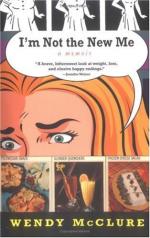William Mulready was of Irish birth, having come into the world at Ennis, in the County Clare, April 1, 1786. In 1809, after a period in the schools of the Royal Academy, he exhibited there a picture entitled “Fair Time,” which gave him almost instant success; and until his death, July 7, 1863, though producing fewer pictures than Wilkie, he worked on very much the same class of subjects. His color is less agreeable than that of the Scot, and his execution very much more labored. His life was uneventful, occupied exclusively with his work, which he loved; so much so that two days before his death, an old man of seventy-seven, he sat drawing in the evening life class at the Royal Academy. He had been a member of the Academy since 1816. The picture here reproduced is (even without the quotation from the “Vicar of Wakefield” which accompanies it in the catalogue of the South Kensington Museum) a simple story simply told. It is free from the mannerisms which mar much of Mulready’s work, especially in the portrayal of children, and in the original is more agreeable in color than are many of his pictures.
[Illustration: CONTRARY WINDS. FROM A PAINTING BY THOMAS WEBSTER. The happily chosen title explains sufficiently this pleasant scene. The picture, painted in 1843, is now in the South Kensington Museum.]
Thomas Webster, born March 20, 1800, in London, and dying at Cranbrook in Kent, September, 1886, was another painter whose work had enjoyed the full meed of popularity, from 1825 to the time of his retirement from the Royal Academy in 1877. Pictures like the one here reproduced (from the original in the South Kensington Museum, painted in 1843, and entitled “Contrary Winds"), pictures depicting homely rustic life, were his specialty. His work had gained him the title of Royal Academician in 1846.
Through all this time, and in the work of many painters unnoticed here, the qualities are evident of an honest endeavor to paint the simple life of the country. With a higher standard of taste, and better preliminary instruction, painting would have gained; and the defect with which British art has been so often reproached, of being too literary, might have been lessened. Charles Robert Leslie, whose works are almost uniformly inspired by literature, was born at Clerkenwell in England, of American parents, October 19, 1794. He was taken to Philadelphia when five years of age, but returned to England in 1811, to study at the Royal Academy. Washington Allston and Benjamin West, both Americans—the latter at the time President of the Royal Academy—aided Leslie by advice.




